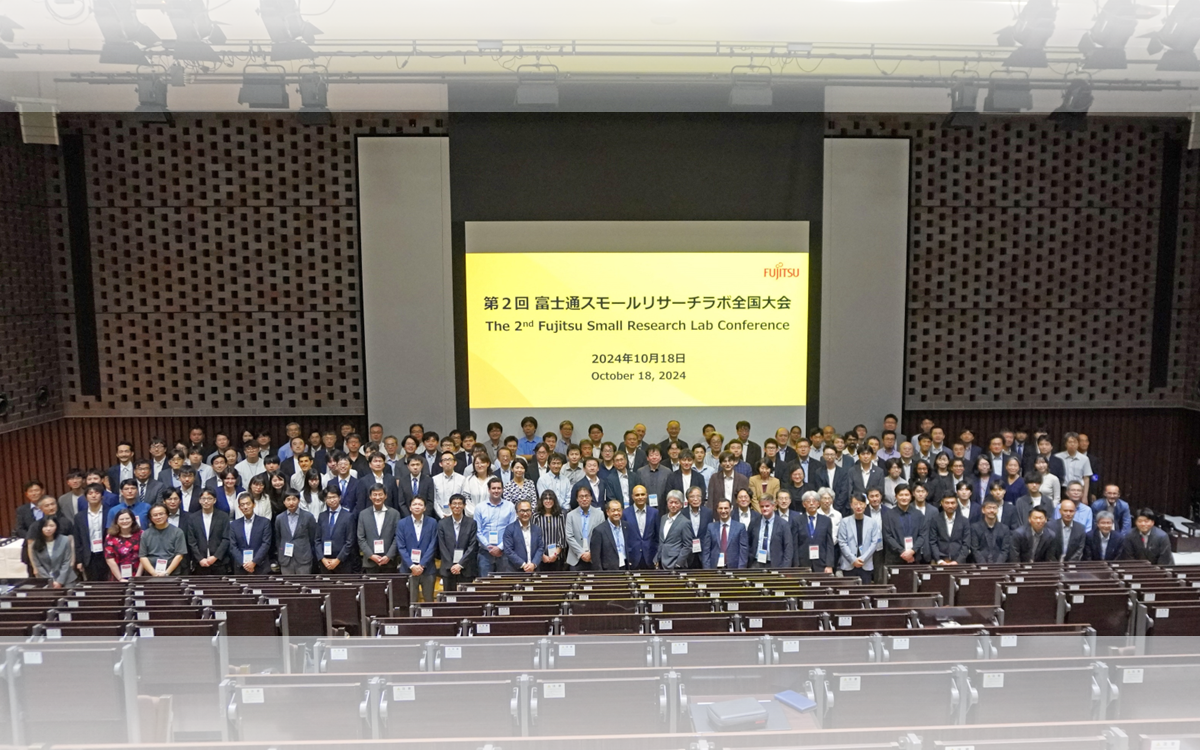Preparing for Quantum Disruption: How Fujitsu Can Help Organizations Prepare Now for Quantum Disruption
Fujitsu / September 16, 2025
Quantum computing is no longer the distant promise of science fiction. In the last decade, it has moved from a purely academic pursuit into a tangible and accelerating technological reality. In 2019, Google signaled a turning point with the announcement that it had achieved “quantum supremacy,” conducting a calculation impossible on the world’s fastest classical supercomputer. Since then, investment, innovation, and competition have intensified, with companies and governments racing toward a future in which quantum computers solve problems that today’s most powerful machines cannot.
For organizations, this progress presents a profound duality. On one hand, quantum computing holds the potential to transform industries by enabling breakthroughs in drug discovery, optimization, materials science, and artificial intelligence. On the other, it threatens the very foundations of digital security, as a sufficiently powerful quantum computer could crack the cryptographic codes that protect global commerce, government secrets, and personal privacy. The risk is not hypothetical: Adversaries are already collecting encrypted data today, with the expectation that tomorrow’s quantum systems will unlock it.
The Timeline for Quantum Disruption
The timeline for this disruption is shrinking. Where once the consensus suggested that quantum capabilities were decades away, recent advances from firms like Microsoft and Fujitsu suggest that practical quantum computing could arrive within years. Now, the strategic question for business leaders is no longer whether quantum disruption will occur, but how to prepare for when it does. Among the companies positioning themselves as trusted partners in this transformation, Fujitsu stands out. With a unique blend of deep research expertise, readily available quantum-inspired solutions, and a clear roadmap to scalable quantum systems, Fujitsu offers organizations a way to both mitigate risk and seize opportunity in the quantum era.
Understanding Quantum Disruption
Quantum disruption will be driven by the emergence of quantum computers with so-called “quantum superiority”, the ability to solve problems beyond the reach of classical supercomputers. Unlike classical computers, which process information using binary bits (0s and 1s), quantum computers leverage qubits, which can exist in multiple states simultaneously due to the principles of superposition and entanglement. This enables exponentially faster computation for specific tasks, such as factorizing large numbers or optimizing complex systems.
For organizations, quantum computers provide immense opportunities, including enhanced machine learning, breakthrough drug discoveries, and optimized logistics. However, these advancements come with significant risks, particularly in cybersecurity, where quantum capabilities threaten widely used encryption methods.
The Need to Act Now
Most current encryption standards rely on cryptographic algorithms such as RSA, ECC (Elliptic Curve Cryptography), and Diffie-Hellman, all of which depend on the difficulty of factorizing large prime numbers or solving discrete logarithmic problems. Shor’s algorithm, a quantum algorithm developed in 1994, theoretically allows quantum computers to break these encryption methods in polynomial time, rendering them obsolete.
Quantum superiority will make most current cryptographic algorithms ineffective. Sensitive corporate data, government secrets, and financial transactions protected by current encryption standards could be exposed once quantum computers reach sufficient power. This phenomenon, known as the “Harvest Now, Decrypt Later” threat, suggests that adversaries may already be collecting encrypted data in anticipation of future quantum decryption capabilities.
Fujitsu’s research has quantified the scale of the threat. Using its 39-qubit quantum simulator to run Shor’s algorithm, it determined that breaking RSA encryption would require around 10,000 qubits, 2.23 trillion quantum gates, and more than 100 days of computation. While beyond today’s capabilities, this is no longer decades away. Hardware roadmaps suggest such power could arrive within years.
Quantum-Safe Cryptography
To counteract these risks, the primary defense is post-quantum cryptography (PQC) encryption schemes designed to withstand quantum attacks. Organizations like the National Institute of Standards and Technology (NIST) are spearheading initiatives to develop and standardize quantum-resistant algorithms, with a shortlist expected to be finalized soon.
For businesses, preparing for PQC means assessing cryptographic dependencies, identifying vulnerable data assets, and developing migration strategies. Unlike traditional software updates, transitioning to quantum-safe cryptography will require a fundamental overhaul of security architectures, supply chains, and compliance frameworks.
Fujitsu’s 40-qubit simulator, available to research partners via the cloud, enables enterprises to model these migration scenarios and test quantum-resistant approaches before hardware threats mature. https://www.fujitsu.com/global/about/research/technology/quantum/
The Emerging Quantum Threat Landscape
Beyond encryption, quantum computing also introduces a broader set of security challenges, including:
• Quantum Powered Cyberattacks: Quantum-enhanced machine learning could be used to optimize cyberattacks, improving social engineering, password cracking, and malware evasion tactics.
• Blockchain Vulnerabilities: Many blockchain protocols rely on classical cryptographic assumptions that may be compromised by quantum computing. While some projects are exploring quantum-resistant blockchain models, current decentralized finance (DeFi) systems remain at risk.
• Nation-State Threats: Governments investing in quantum technologies may leverage their capabilities for cyber espionage, economic disruption, and military applications. Fujitsu addresses these scenarios through quantum-inspired simulation tools that allow clients to explore attack models and design countermeasures in advance.
Fujitsu addresses these scenarios through quantum-inspired simulation tools that allow clients to explore attack models and design countermeasures in advance.
Quantum Risks Mitigation Strategies
1. Quantum Risk Assessment and Roadmap Development
Organizations should conduct a quantum risk assessment to evaluate their exposure to post-quantum threats. This involves:
• Identifying critical assets protected by classical encryption.
• Assessing the lifecycle of data and whether it needs long-term protection.
• Evaluating supplier and third-party dependencies on vulnerable cryptographic systems.
A strategic roadmap should outline phased transitions to quantum-safe protocols, ensuring business continuity during the migration process.
2. Investing in Post-Quantum Cryptography and Hybrid Solutions
Since full-scale quantum computers are not yet available, businesses can adopt hybrid cryptographic models combining classical encryption with post-quantum algorithms. This approach provides a safety net during the transition period and ensures backward compatibility with existing systems.
3. Collaborating with Industry and Regulatory Bodies
Quantum security is a global issue requiring collective action. Organizations should:
• Engage with NIST, ISO, and other standardization bodies to stay ahead of cryptographic developments.
• Participate in industry consortia dedicated to quantum cybersecurity.
• Work closely with government agencies to align with evolving regulations and risk frameworks.
4. Building In-House Quantum Competence
Quantum computing is complex, and many businesses lack in-house expertise. Companies should:
• Invest in quantum literacy programs for cybersecurity teams.
• Recruit quantum computing specialists or collaborate with quantum research institutions.
• Foster partnerships with quantum technology providers, such as Fujitsu, to gain timely access to security solutions.
Fujitsu’s Digital Annealer Unit (DAU), for instance, used with SAP to optimize manufacturing, logistics, and space allocation, demonstrates how quantum-inspired methods can deliver operational advantages today.
https://www.fujitsu.com/global/services/business-services/digital-annealer/
5. Continuous Monitoring and Agile Security Practices
As quantum technology evolves, businesses must adopt an agile security posture. This includes:
• Regularly updating encryption protocols in response to quantum advancements.
• Conducting quantum penetration testing to simulate future attack scenarios.
• Integrating quantum security considerations into enterprise risk-management frameworks.
The Business Opportunity in Quantum Security
While quantum computing presents new security risks, it also offers opportunities for businesses that proactively adapt. Early adopters of quantum-safe security solutions can position themselves as leaders in the cybersecurity market, gaining a competitive edge. Moreover, companies investing in quantum technologies may benefit from enhanced data analysis, AI improvements, and next-generation cryptographic solutions that offer superior security and efficiency. Organizations that embrace quantum resilience now will not only protect their assets but also future proof their operations against the next computing revolution.
Conclusion
Quantum superiority is no longer a distant theoretical milestone—it is an impending reality that will redefine cybersecurity. Organizations must act now, decisively, to transition toward quantum-safe encryption, invest in quantum literacy, and collaborate with industry leaders such as Fujitsu to mitigate the risks of quantum-powered cyber threats. The era of quantum computing will bring transformative change, and businesses that anticipate these shifts will be well positioned to thrive in the new digital landscape.
So, why not talk to Fujitsu to find out how we can help you prepare for the quantum future?

Related information
Editor's Picks











